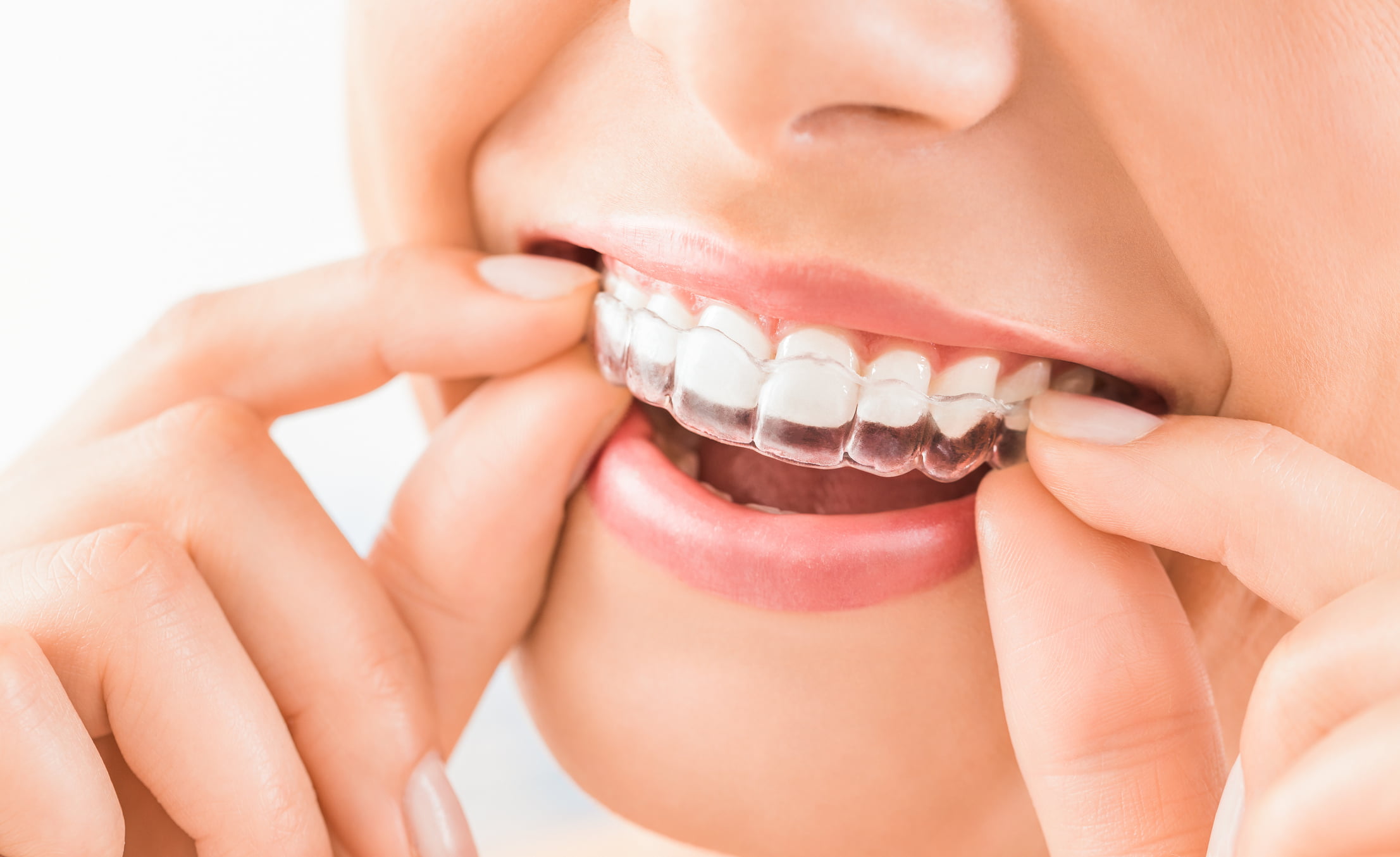
Invisalign vs. braces: who wins on speed? If you’re looking to straighten your teeth and want results fast, this guide breaks it down.
We’ll compare treatment times, explore what affects progress, and help you decide which option gets you to your best smile sooner.
Invisalign can be faster than traditional braces for some people, typically taking about 12-18 months. The exact time depends on your specific dental needs and the complexity of your case.

Invisalign is a modern orthodontic treatment that uses a series of clear, removable aligners to gradually shift your teeth into their proper position.
These aligners are custom-made to fit your mouth and are designed to be worn for about 20 to 22 hours a day, with each set worn for about two weeks before switching to the next one.
How Does Invisalign Work?
Invisalign works by using a series of custom-made aligners that gradually shift your teeth into alignment.
The aligners are made of clear plastic, making them much less noticeable than traditional metal braces. The treatment plan is mapped out by an orthodontist using 3D imaging to create a precise path for your teeth to follow.
Traditional braces, on the other hand, consist of metal brackets attached to your teeth, connected by wires and rubber bands.
Over time, the orthodontist tightens the wires to shift your teeth into position. Braces are a more visible option compared to Invisalign, but they have been the go-to solution for straightening teeth for decades.
How Do Braces Work?
Braces work by applying continuous pressure on the teeth, gradually moving them into the desired position.
The metal brackets are glued to each tooth, and a wire is threaded through them. This wire is tightened periodically by the orthodontist to adjust the pressure and continue the teeth alignment.
The treatment time for both Invisalign and traditional braces depends on several factors, including the complexity of the dental issues being corrected, the patient's age, and how well they follow the treatment plan.
However, there are some general guidelines when comparing the two treatments.
1. Invisalign Treatment Time
On average, Invisalign treatment takes 12 to 18 months to complete, although this can vary based on the specific needs of the patient.
For minor cases, Invisalign may take less time—sometimes as little as 6 months. However, for more complex dental issues, treatment could take longer.
Minor cases: 6 to 12 months
Moderate to severe cases: 12 to 18 months
Invisalign aligners are designed to be worn 20 to 22 hours a day, with each set swapped out about every two weeks. If you’ve ever wondered how does Invisalign work, it’s this consistent wear and gradual change that gently shifts your teeth into place.
Regular follow-ups with the orthodontist are necessary to monitor progress and make adjustments if needed.
2. Traditional Braces Treatment Time
Traditional braces typically take longer than Invisalign. On average, braces treatment lasts 18 to 24 months, but this can be shorter or longer depending on the complexity of the case.
Minor cases: 12 to 18 months
Severe cases: 24 months or longer
Braces require more frequent visits to the orthodontist to tighten the wires and make necessary adjustments.
The treatment time can be longer if the patient does not follow the care instructions, such as avoiding certain foods or failing to attend appointments regularly.

When it comes to treatment time, Invisalign is generally faster than traditional braces.
Invisalign can straighten your teeth in as little as 6 months for minor cases, whereas traditional braces typically require at least a year of treatment, even for less complex issues.
However, the actual speed of treatment for both methods depends on the severity of the dental problems being addressed.
Here are some factors that can affect how long it takes to straighten your teeth with either Invisalign or traditional braces:
1. Severity of the Issue
Invisalign can be faster for people with less severe misalignment or spacing issues.
However, in cases where there are complex bite problems or significant misalignment, traditional braces might be more effective and may still be faster at addressing the issue in some cases.
2. Compliance with Treatment
The effectiveness and speed of Invisalign depend heavily on the patient’s commitment to wearing the aligners for the recommended 20 to 22 hours per day.
If you are diligent about following the instructions, Invisalign may work faster.
Braces, on the other hand, are fixed, so there's no risk of non-compliance, and they may work more efficiently for certain cases.
3. Follow-Up Appointments
Both Invisalign and braces require regular orthodontic check-ups to ensure that the treatment is progressing.
For Invisalign, this typically involves getting new aligners every two weeks.
With traditional braces, the wires and rubber bands need tightening during follow-up visits, which usually occur every 4 to 6 weeks. The regularity and consistency of these appointments can impact treatment time.
Invisalign can work for moderate to severe misalignment, but in some cases, traditional braces may be more effective for complex dental issues like bite problems or significant crowding.
On average, Invisalign treatment takes 12 to 18 months, though this can be shorter for less severe cases or longer if more significant alignment adjustments are needed.
Yes, Invisalign can be used for teenagers, and there is even an option called Invisalign Teen, specifically designed to accommodate growing mouths and developing teeth.
When deciding between Invisalign and traditional braces, the treatment time is a key factor to consider.
Invisalign is generally faster for most cases, especially for mild to moderate misalignment.
However, the treatment time for both options can vary depending on individual circumstances, such as the severity of the misalignment, how well you follow the treatment plan, and the type of orthodontic issues you have.
Ultimately, the best choice depends on your personal preferences, budget, and the advice of your orthodontist.
Whether you opt for Invisalign or traditional braces, both can effectively straighten your teeth and give you the smile you’ve always wanted.
Be sure to consult with an orthodontic professional to determine the right treatment for your specific needs.